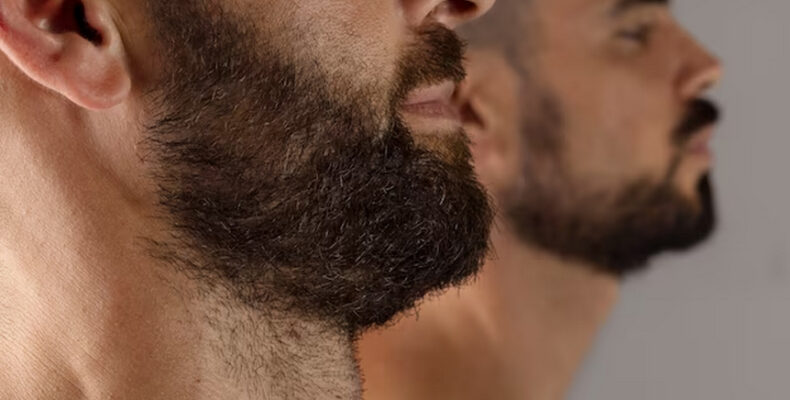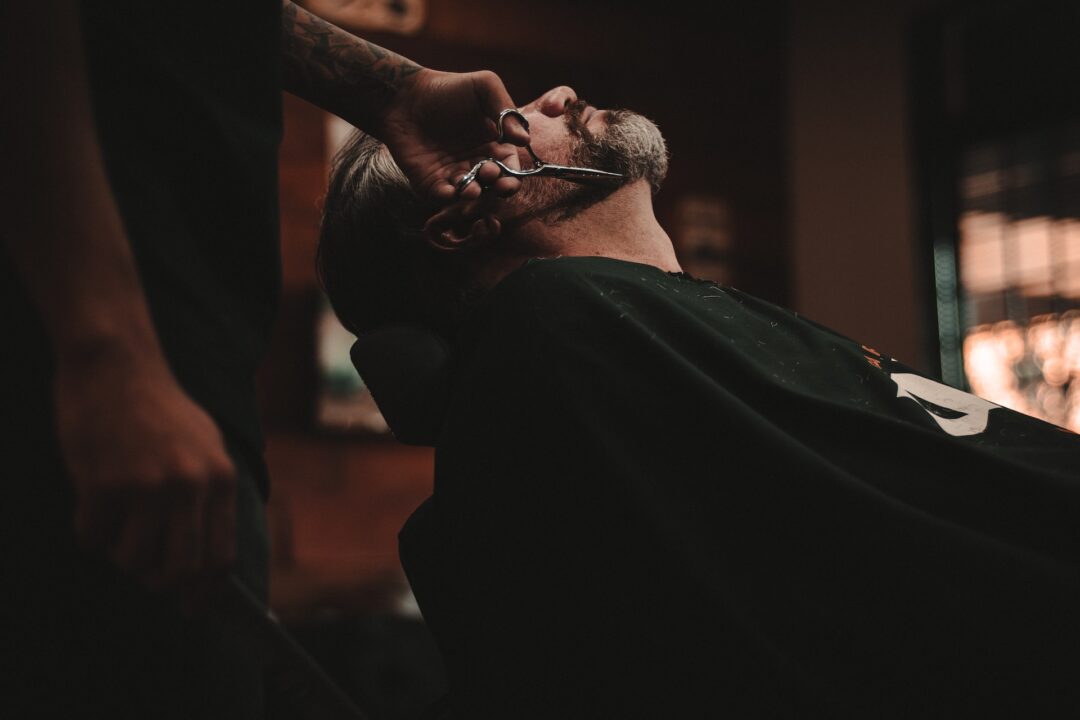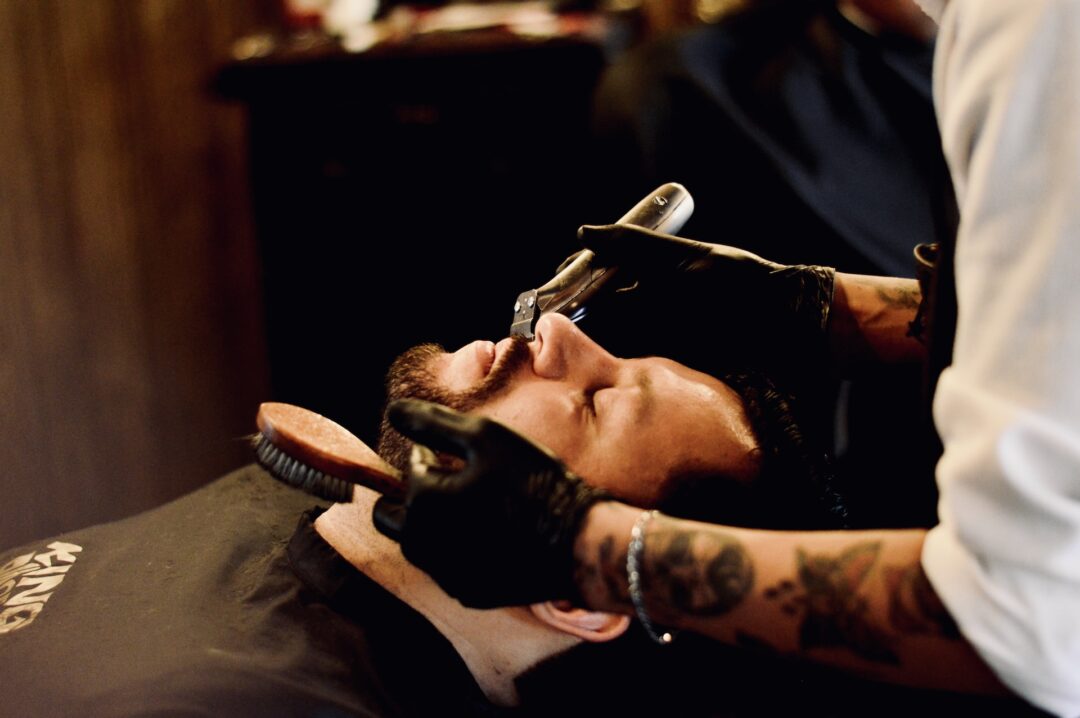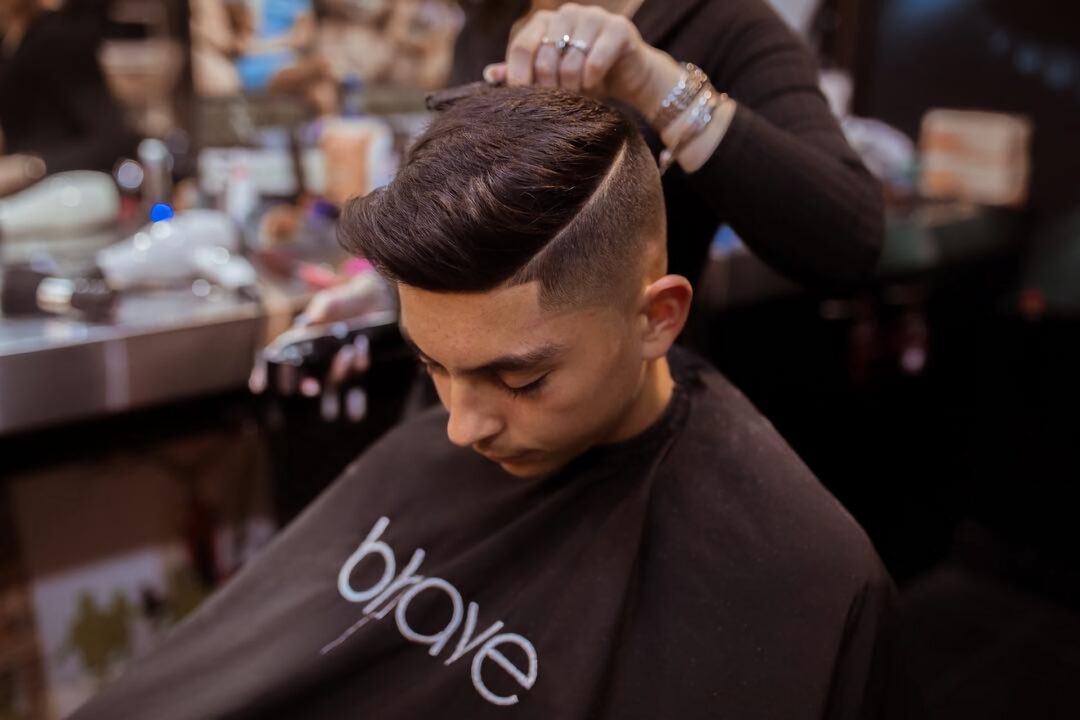For many men, a beard is a rite of passage, a symbol of maturity, or even a fashion statement. The rate at which facial hair grows can be a source of curiosity, concern, or pride. If you’ve ever wondered, “how long does it take to grow a beard?” or “how long should it take to grow a beard?” then this article is for you. Let’s dive deep into the intriguing world of beard growth.
Myths About Beard Growth
Beards have been the subject of innumerable urban legends over the years. Whether they are urban legends or common misunderstandings, it is important to dispel them in order to get to the truth about how beards develop. The following are some of the most widespread misconceptions and the facts that dispel them:
Myth 1: Shaving Makes Your Beard Grow Back Thicker and Faster
- The Truth: This is perhaps the most pervasive beard myth. Contrary to popular belief, shaving does not influence the rate or thickness of your beard growth. When you shave, you’re trimming the hair at its thickest point, so when it regrows, it may feel coarser or appear darker, but this is purely a result of the blunt, cut edge. The hair itself hasn’t actually thickened. This myth likely stems from the illusion created by the blunt ends of shaved hair.
Myth 2: Every Man Can Grow a Beard
- The Truth: Unfortunately, not every man can grow a full beard. Genetics play a significant role in determining beard growth. If your ancestors had thin or patchy beards, there’s a chance you might experience the same. Beard growth patterns are hereditary, and factors such as hormone levels and age also come into play.
Myth 3: Patchy Beards Indicate Low Testosterone Levels
- The Truth: A patchy beard does not necessarily indicate low testosterone levels. While testosterone does influence beard growth, having a patchy beard can be attributed to various factors, including genetics. Some individuals may have adequate testosterone but still struggle with uneven beard growth due to their genetic predisposition.
Myth 4: Beards Are Inherently Dirty
- The Truth: A beard, much like the hair on your head, can accumulate dirt and grime if not properly cared for. However, with regular washing and grooming, a beard can be just as clean as any other hair on your body. Maintaining good hygiene practices ensures that your beard remains clean and healthy.
Myth 5: Pulling on Your Beard Makes It Grow Faster
- The Truth: Some people believe that tugging or pulling on their beard stimulates the hair follicles and encourages faster growth. While a gentle massage can improve blood circulation to the area, excessive pulling or tugging can harm both the hair and follicles. This damage can potentially lead to hair loss, making it essential to handle your beard gently.
Myth 6: Hair Growth Products Work the Same on Beards
- The Truth: Hair on your face and the hair on your scalp have different characteristics and growth cycles. Products formulated for scalp hair might not be suitable for facial hair. It’s crucial to choose beard-specific grooming products that cater to the unique needs of your facial hair, such as beard oils, balms, and shampoos.
Myth 7: Gray Beards Are Coarser
- The Truth: Gray or white beards can sometimes feel coarser or more wiry. This perception is not due to the color itself but is related to the aging process. As we age, our skin produces less natural oil (sebum), which can result in drier and coarser hair. So, it’s not the color of the beard but rather the age-related reduction in sebum production that can make it feel coarse.
The Science Behind Beard Growth
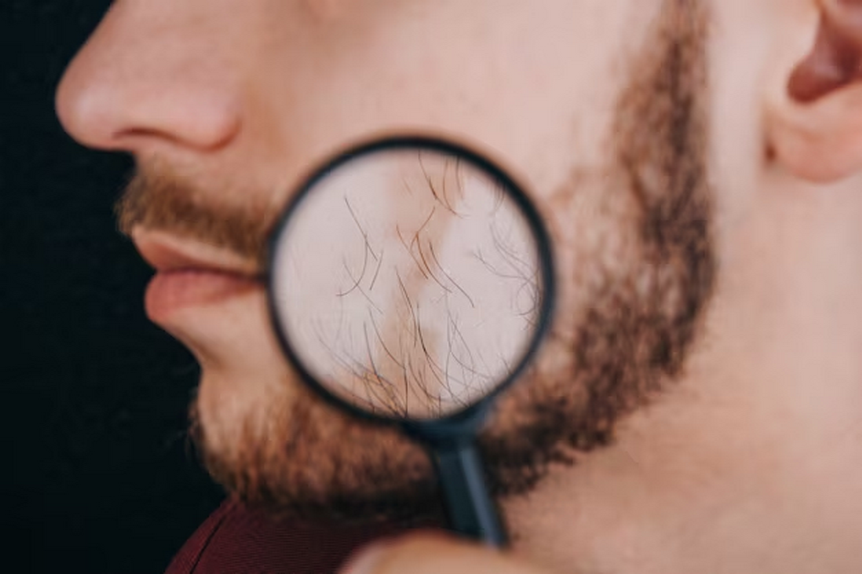
Facial hair growth is a fascinating biological process that involves a combination of genetic, hormonal, and lifestyle factors. Understanding the science behind beard growth can provide valuable insights into how to promote and enhance this process. In this article, we’ll explore the various aspects of beard growth, including the phases of hair growth, the role of hormones, genetics, and the impact of health and lifestyle choices.
Phases of Hair Growth
Hair growth, including beard growth, occurs in three main phases:
| Hair Growth Phase | Duration | Description | Role in Beard Growth |
| Anagen Phase | Two to six years | This is the active growth phase during which hair follicles produce new hair. The longer this phase lasts, the longer your beard can potentially grow. | Genetics largely determine the length of the anagen phase, which varies among individuals. |
| Catagen Phase | Approximately two weeks | This is a transitional phase where hair growth slows down, and the hair follicle begins to shrink. It’s a brief resting period for the hair. | The catagen phase is a natural part of the hair growth cycle and prepares the follicle for the next phase. |
| Telogen Phase | One to four months | During this phase, the hair follicle is in a resting state, and the old hair eventually sheds. | After shedding, a new hair begins to grow from the same follicle, starting the cycle anew. |
Role of Hormones in Beard Growth
Hormones play a crucial role in determining the pattern and quality of facial hair growth, with testosterone and dihydrotestosterone (DHT) being the primary players:
| Hormone | Role | Production | Beard Growth |
| Testosterone | Male sex hormone responsible for the development of male characteristics, including facial hair growth. | Produced in the testes (in men) and in smaller amounts in women’s ovaries and adrenal glands. | Adequate levels of testosterone are essential for initiating and maintaining beard growth. |
| Dihydrotestosterone (DHT) | Derivative of testosterone and exerts a significant influence on beard growth. | Testosterone is converted into DHT by the enzyme 5-alpha-reductase. | Men with higher DHT levels tend to have thicker and faster-growing beards. DHT stimulates the growth of terminal hair, which is the thicker, coarser type of hair found in beards. |
Genetics and Beard Growth
Genetics plays a fundamental role in determining the characteristics of your beard:
- Beard Thickness: Your genes dictate how thick your beard can get. If your family has a history of thick beards, you are more likely to have a thick beard as well;
- Beard Color: The color of your beard is also genetically determined. Genes control the melanin production in hair follicles, influencing beard color;
- Beard Growth Age: The age at which you start growing a beard is largely influenced by genetics. Some individuals may develop facial hair earlier than others due to their genetic predisposition.
Why Do Beards Grow Slow or Fast?
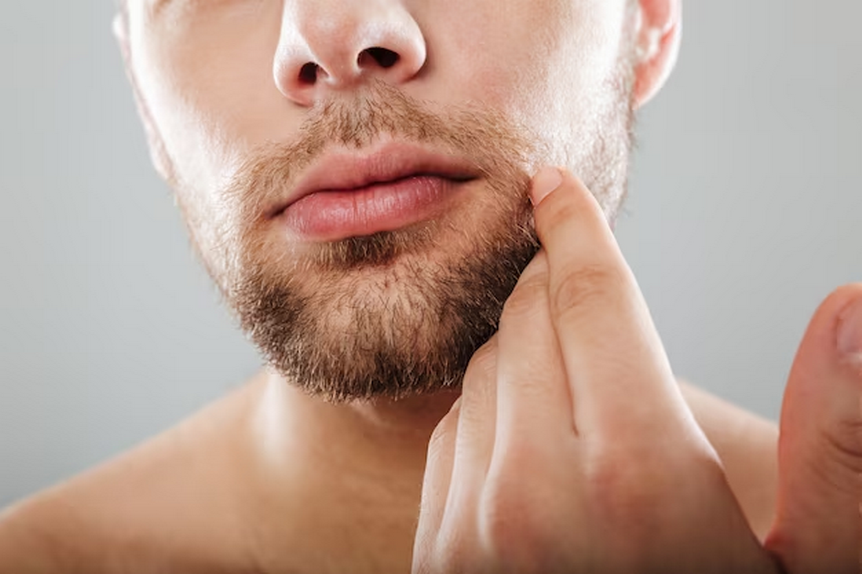
The rate at which beards grow is not the same for everyone; it varies significantly from person to person. Several factors contribute to the speed of beard growth, and understanding these factors can help shed light on why some individuals experience slow or fast beard growth. Let’s explore these factors using tables, bullet lists, and well-structured paragraphs.
Age
Age plays a significant role in beard growth. Facial hair growth is heavily influenced by hormones, and these hormone levels tend to increase as individuals age. Typically, facial hair starts to fill out in the mid-20s or later. Here’s a breakdown of beard growth characteristics by age group:
| Age Group | Beard Growth Characteristics |
| Teens | Sparse and patchy facial hair |
| Early 20s | Slow but gradual improvement in beard density |
| Mid-20s | Fuller and more defined beard, begins to appear |
| Late 20s+ | Thicker, fuller beard with continued growth |
As seen in the table, teens usually have sparse and patchy facial hair due to lower hormone levels. In the early 20s, there is a gradual improvement in beard density. By the mid-20s, a fuller and more defined beard starts to appear, and in the late 20s and beyond, the beard becomes thicker and continues to grow.
Nutritional Deficiencies
Nutrition plays a vital role in overall health, including beard growth. Nutritional deficiencies can slow down beard growth because the hair follicles require essential vitamins and minerals for optimal function. Here are some key nutrients that promote healthy beard growth:
- Biotin (Vitamin H): Biotin is essential for hair health. A deficiency can lead to slow beard growth or hair thinning;
- Vitamin E: Vitamin E is an antioxidant that supports hair follicle health. It can help maintain the strength and shine of beard hair;
- Zinc: Zinc is a mineral that aids in cell growth and repair, including hair follicles. A lack of zinc can impede beard growth.
Ensuring a balanced diet rich in these nutrients can contribute to better beard growth.
Stress
Chronic stress can negatively impact hair growth, including the growth of facial hair. Stress triggers the release of cortisol, a hormone that can disrupt the normal hair growth cycle. This disruption can lead to slower beard growth or even hair loss. Managing stress through relaxation techniques, exercise, and a healthy lifestyle can help mitigate its effects on beard growth.
Tips for Promoting Beard Growth
While genetics play a significant role in determining beard growth, there are several practical steps you can take to promote and maintain healthy facial hair. Let’s explore various tips and strategies to help you achieve the beard of your dreams.
Maintain a Balanced Diet
A balanced diet is the foundation for healthy beard growth. In addition to the previously mentioned nutrients, here’s a more detailed breakdown:
- Protein: Proteins are the building blocks of hair. They contain amino acids necessary for hair growth and repair. Ensure you include a variety of protein sources in your diet, such as lean meats, poultry, fish, dairy, beans, and nuts;
- Omega-3 Fatty Acids: These essential fatty acids are known for their anti-inflammatory properties and can help prevent hair follicle inflammation. Fatty fish like salmon and mackerel are rich sources, while plant-based options include flaxseeds and chia seeds;
- Biotin (Vitamin B7): Biotin is crucial for healthy hair. It aids in the production of keratin, a protein that makes up your hair. Besides eggs, nuts, and whole grains, you can find biotin in foods like sweet potatoes, avocados, and mushrooms;
- Vitamin E: Vitamin E plays a role in increasing blood circulation to hair follicles, promoting overall hair health. In addition to nuts, seeds, spinach, and avocado, you can also get vitamin E from vegetable oils like sunflower and safflower oil.
Exercise Regularly
Incorporate a mix of aerobic and strength-training exercises into your routine. Aerobic exercises, like jogging and swimming, boost overall blood circulation, ensuring that your hair follicles receive ample nutrients. Strength training, on the other hand, can help increase testosterone levels, which is vital for beard growth.
Beard Oils and Serums
Understanding the benefits of key ingredients in beard products:
- Castor Oil: This oil contains ricinoleic acid, which not only promotes hair growth but also improves the quality of your beard. It can make your beard appear thicker and more robust;
- Jojoba Oil: Jojoba oil is similar to the natural oil (sebum) your skin produces. It’s excellent for beard hydration and can help prevent dryness, itchiness, and beard dandruff. By keeping your facial hair well-moisturized, it reduces the risk of hair breakage;
- Peptides: These small proteins can stimulate the hair follicles, encouraging them to produce thicker and stronger beard hair. Peptide-infused products can be especially beneficial for those looking to fill in patchy areas.
When applying beard oils and serums, remember to be consistent in your routine. Daily application and gentle massaging help ensure these products penetrate deep into your hair follicles.
Stay Hydrated
Water is essential for all bodily functions, including the health of your beard. Adequate hydration maintains the moisture balance in your skin and keeps your hair follicles in optimal condition. Carry a reusable water bottle with you and aim to drink water throughout the day.
Avoid Smoking
Quitting smoking is not only beneficial for your overall health but also for your beard. Smoking restricts blood vessels, reducing the flow of essential nutrients to your hair follicles. By quitting smoking, you can improve blood circulation, leading to healthier facial hair growth.
Get Sufficient Sleep
Sleep is crucial for overall health and beard growth. During deep sleep, your body repairs and regenerates, including your hair follicles. Prioritize quality sleep by establishing a regular sleep schedule and creating a comfortable sleep environment.
Manage Stress
Chronic stress can lead to hormonal imbalances that hinder beard growth. Incorporate stress-reduction techniques into your daily life, such as meditation, yoga, deep breathing exercises, or spending time in nature. Reducing stress levels can positively impact your beard’s growth potential.
Recommended Products for Beard Growth

Nurturing your beard for optimal growth requires a multifaceted approach. This guide explores brand-specific products that have gained recognition within the beard community. Whether you’re seeking nourishing oils, conditioning balms, growth serums, or supplements, these carefully selected options can contribute to a healthier and potentially faster-growing beard.
Beard Oils
Beard oils are a fundamental part of any beard care routine, as they provide essential moisture and nutrients to both your facial hair and the skin beneath. Here are some notable beard oils:
| Product | Key Ingredients | Benefits |
| Honest Amish Classic Beard Oil | Organic oils blend | Nourishes the beard and promotes healthy growth. |
| Beardbrand Tree Ranger Beard Oil | Natural ingredients blend | Softens the beard and leaves a pleasant scent. |
| Jack Black Beard Oil | Kalahari melon oil, vitamin E | Hydrates the beard and the skin underneath. |
Beard Balms
Beard balms offer a unique combination of conditioning and styling properties. They help to soften your beard and keep it well-groomed throughout the day. Two excellent options are:
| Product | Key Features | Benefits |
| Honest Amish Beard Balm | Natural ingredients | Conditions and softens the beard. |
| Cremo Styling Beard Balm | Strong hold | Ensures your beard stays in shape all day. |
Beard Growth Serums and Sprays
For those seeking to accelerate beard growth, specialized serums and sprays can be beneficial. These products often contain ingredients that promote hair follicle stimulation. Two noteworthy choices include:
| Product | Key Ingredients | Claimed Benefits |
| Maxx Beard Growth Solution | Hair-follicle stimulating blend | Stimulates hair follicles and promotes growth. |
| Beard Flux XL | Caffeine-infused formula | Claims to boost beard growth with regular use. |
Supplements
Incorporating supplements into your daily routine can provide essential vitamins and nutrients that support overall hair health, including beard growth. Here are two popular supplements:
| Product | Key Features | Benefits |
| Beard Grow XL | Rich in vitamins and essential nutrients | Supports healthy beard growth by addressing deficiencies. |
| Vitabeard | Facial hair multivitamin | Provides nutrients crucial for beard growth and health. |
Remember that individual results may vary, and the effectiveness of these products may depend on various factors, including genetics and consistency of use. To determine the best products for your specific needs, consider consulting a dermatologist or beard care specialist. Additionally, always follow the manufacturer’s instructions for optimal results and beard health.
Grooming While Growing a Beard
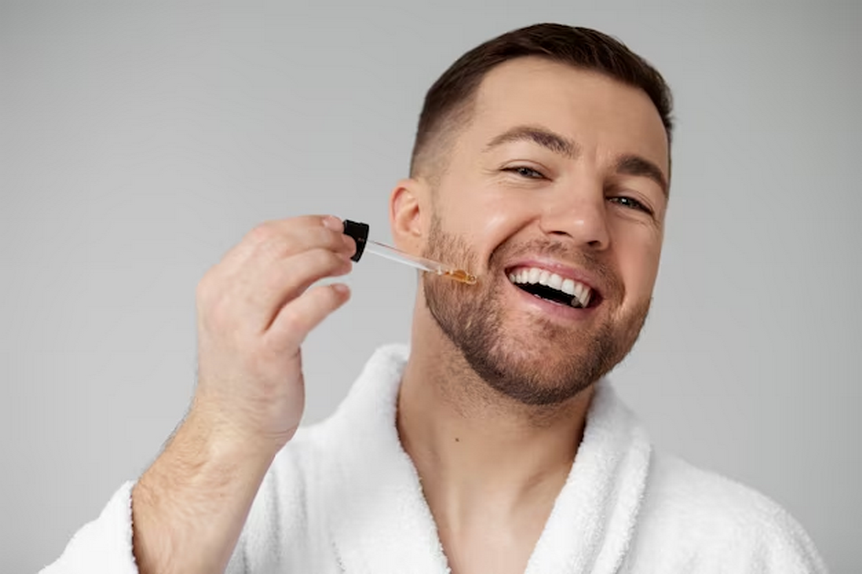
Proper grooming is essential to ensure that your beard looks its best at every stage of growth. In this guide, we will delve into the key aspects of beard grooming, including washing and conditioning, brushing and combing, trimming, and styling.
Washing and Conditioning
Proper washing and conditioning are fundamental to maintaining a healthy and great-looking beard. Here’s an extended discussion on these crucial aspects:
- Beard Shampoo: Choosing the right beard shampoo is essential. Look for a natural formula that not only cleans your beard but also nourishes it without stripping away the essential oils that keep your facial hair soft and healthy. Natural ingredients such as aloe vera, tea tree oil, or chamomile can offer additional benefits, like soothing the skin beneath your beard;
- Beard Conditioner Wash: A beard conditioner wash complements your shampoo perfectly. Regular use of a conditioner helps to retain the softness, shine, and manageability of your beard. It works by moisturizing and hydrating your facial hair, preventing dryness, and reducing the risk of itchiness. Choosing a conditioner that matches your shampoo brand can enhance the overall effectiveness of your grooming routine.
Brushing and Combing
Beard maintenance extends beyond just cleansing. Brushing and combing are essential steps in ensuring that your beard stays neat and healthy. Here’s an in-depth look at these practices:
- Beard Brush: A beard brush with natural bristles is a grooming tool you shouldn’t overlook. This type of brush effectively distributes the natural oils produced by your skin throughout your beard. By doing so, it helps keep your beard soft and shiny while preventing knots and tangles. Regular brushing also stimulates blood flow to the hair follicles, promoting healthy beard growth;
- Pocket Beard Comb: A handcrafted pocket comb is a versatile tool for on-the-go grooming. It’s perfect for detangling your beard and maintaining its shape throughout the day. Look for combs with both fine and wide-toothed sides to cater to different beard lengths and textures. Combing can also help spread any styling products you use more evenly.
Trimming
Trimming your beard is a critical aspect of grooming, allowing you to maintain the length and shape that best suits your style. Let’s explore this topic further:
- Adjustable Beard Trimmer: Invest in an adjustable beard trimmer with multiple length settings to ensure precise trimming. This versatility allows you to experiment with various beard styles and maintain your preferred beard length with ease. Additionally, trimmers with cordless options provide more flexibility in your grooming routine;
- Stainless Steel Beard Trimmer: Durability and precision are key when selecting a trimmer. Stainless steel blades are known for staying sharp and resisting corrosion, ensuring consistent and clean cuts. Regularly cleaning and oiling your trimmer blades will prolong their life and maintain their performance.
Styling
Styling your beard adds the finishing touch to your grooming routine. Here’s a deeper dive into the styling products you can use:
- Styling Balm: When selecting a styling balm, consider your desired level of hold and texture. Some balms offer a strong hold that helps you shape and control unruly hairs, while others provide a lighter hold for a more natural appearance. Look for a balm that suits your style and preference, ensuring it doesn’t leave your beard feeling stiff or greasy;
- Beard Balm with Natural Ingredients: A beard balm enriched with natural ingredients like shea butter, beeswax, and essential oils not only provides styling hold but also nourishes your beard and the skin underneath. These ingredients can help prevent dryness, reduce split ends, and promote overall beard health. It’s a versatile product that combines styling and conditioning benefits.
Conclusion
When contemplating “how long does it take to grow a beard” or “how long should it take to grow a beard,” remember that each individual is unique. Factors like genetics, age, and health play a significant role. With patience and proper care, you can support and even enhance your beard growth journey.
FAQs
How long does it take for a beard to grow back after shaving?
Typically, facial hair grows at a rate of about half an inch per month. So, if you’ve just had a clean shave, expect a decent length beard in about two to four months.
How long should it take to grow a full beard?
On average, it takes two to six months to grow a full beard, depending on individual growth rates and what one defines as a “full” beard.
Why is my beard not growing even after waiting for months?
Genetics, hormonal imbalances, stress, and nutritional deficiencies could be factors. Consult a dermatologist for a precise understanding.
How long it takes to grow a beard after using beard growth products?
It varies. Some people see results in as little as a month, while for others, it might take several months. Always ensure you’re using reputable products.
If I trim or shave my beard, will it grow back thicker?
This is a common myth. Shaving or trimming doesn’t influence the thickness of the hair. However, new growth might feel coarser, giving the illusion of thickness.
